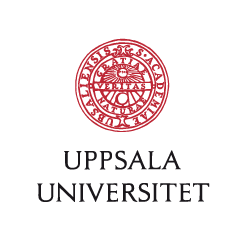 It is important in the academia to know who actually contributed as author to scientific publications. Partly because authorship is meritorious when researchers seek positions and funding. Partly to facilitate investigations of suspected research misconduct.
It is important in the academia to know who actually contributed as author to scientific publications. Partly because authorship is meritorious when researchers seek positions and funding. Partly to facilitate investigations of suspected research misconduct.
These are two important reasons why there are guidelines for academic authorship. These guidelines state that an author should not only contribute to design, data collection, or analysis behind the publication. An author should also contribute to writing and revising the text. An author should moreover approve the final version of the text, and agree to be accountable if there are issues of accuracy or integrity.
The number of authors listed on academic publications tends to increase. As an extreme example, I might mention that in 2011, 140 scientific articles were published listing more than 1,000 authors!
One reason for the larger numbers of listed authors is, of course, that research is becoming increasingly complex and requires collaborations that are more extensive. However, much suggests that the number of undeserving authors increases. One could speak of a culture of honorary authorships within the academia.
There are strong driving forces behind the culture of honorary authorships. It can be about supporting cohesion in a research group by avoiding the uncomfortable decision to exclude team members who contributed minimally to the work being published. It can be about creating good relationships with influential people in the research community by giving them authorship; which they sometimes demand. It can be about increasing the chances of being published by having a famous researcher’s name in the author list. And since big research projects are prestigious, a long author list looks good. It creates pressure on the journals to publish what apparently required the contribution of so many skilled researchers – one thinks.
What can we do about it? In a recent article with the, nowadays, modest number of four authors, it is emphasized that guidelines for academic authorship, which have been around for a long time and are well known, obviously do not suffice. In the journal Insights, Stefan Eriksson, Tove Godskesen, Lars Andersson and Gert Helgesson write that we probably need to create psychological incentives against the culture of honorary authorships.
More specifically, two simple measures are suggested that can reduce undeserving authorships within the academia:
- When researchers seek positions, interview them about their contributions to publications that they include in the list of qualifications. If they are only honorary authors, they may not be able to account for the articles or how they contributed to them. Knowing that this is part of the recruitment process can create a psychological pressure to avoid undeserving honorary authorships.
- Divide authorship and citations scores with the number of authors. Awareness that scores are calculated in this way creates a psychological pressure not to include undeserving authors in the author list.
One might object that this proposal instead risks excluding collaborators from contributing as authors, although they could very well be invited to function as well-deserved co-authors. This objection is addressed in the article. Instead of explaining the authors’ defense, I hope that my silence on this point will motivate readers of the Ethics Blog to read the important article. So that I do not lure you into some sort of honorary readership! How often do we not intimate that we have read something very interesting, which we in fact only skimmed through or heard summarized?
The academic culture of honorary authorships will not disappear easily. Ethical guidelines are obviously not enough. Of course, the best thing would be if we all became saints. While waiting for it to happen, psychological incentives may be needed to behave well.
Eriksson, S., Godskesen, T., Andersson, L., Helgesson, G. (2018). How to counter undeserving authorship. Insights. 31(1), p.1. DOI: http://doi.org/10.1629/uksg.395


Recent Comments